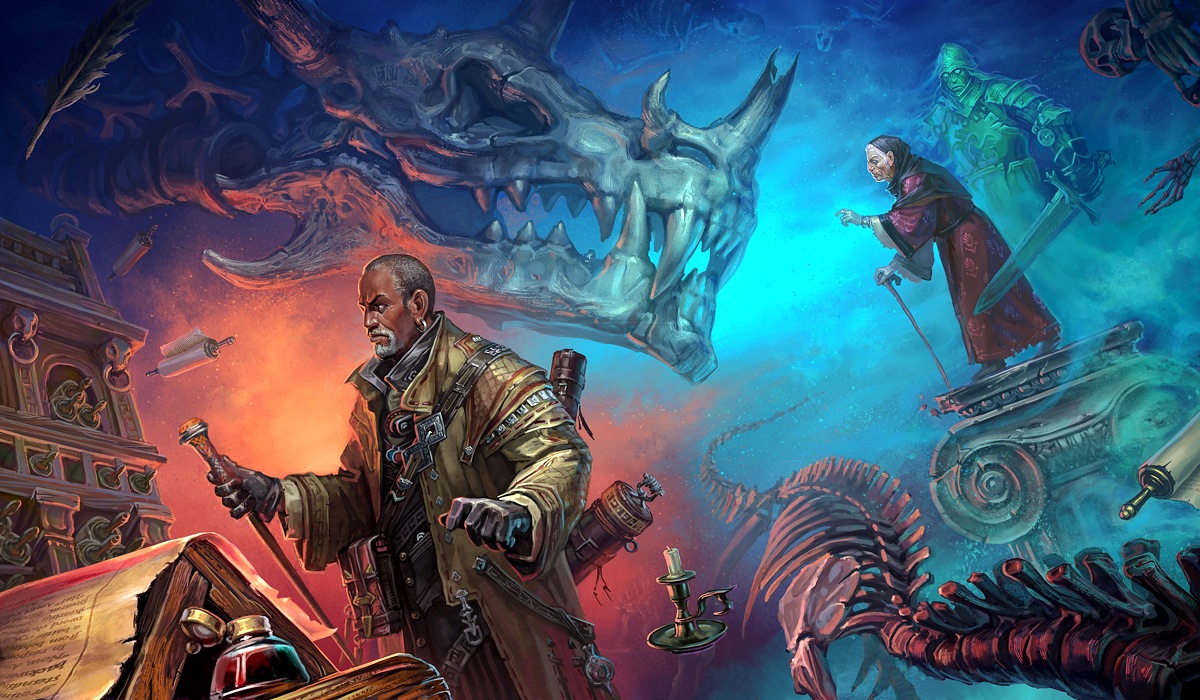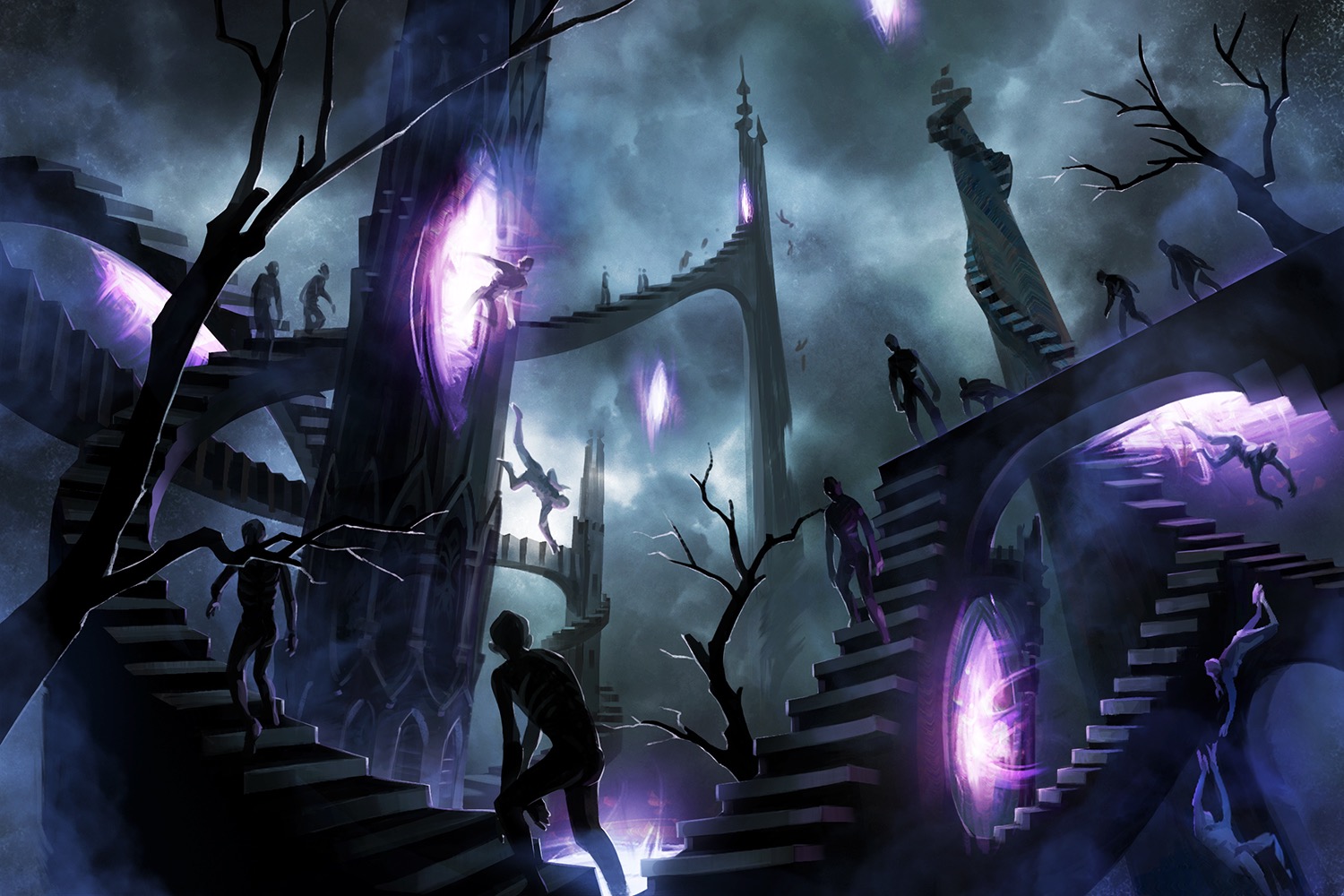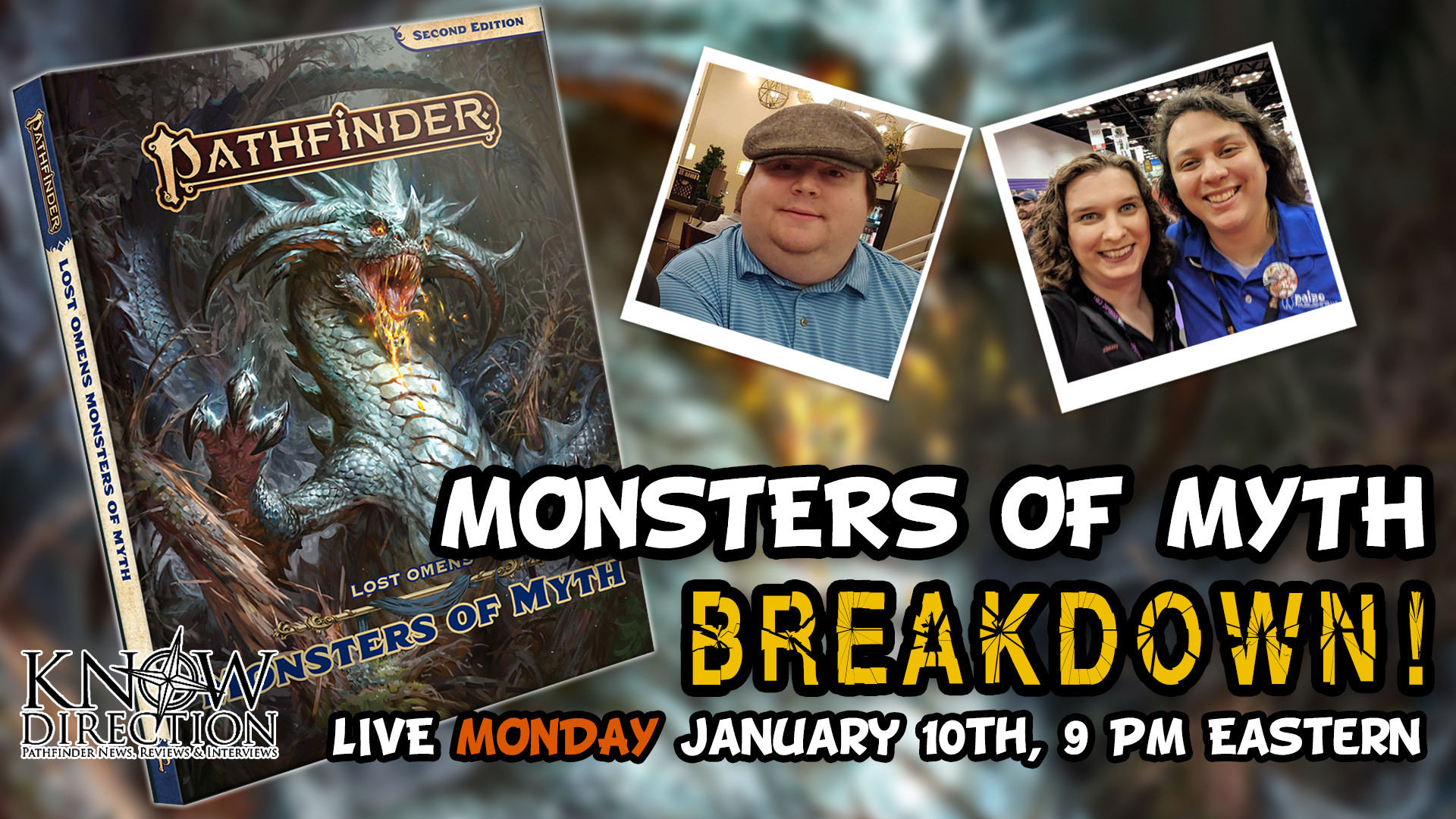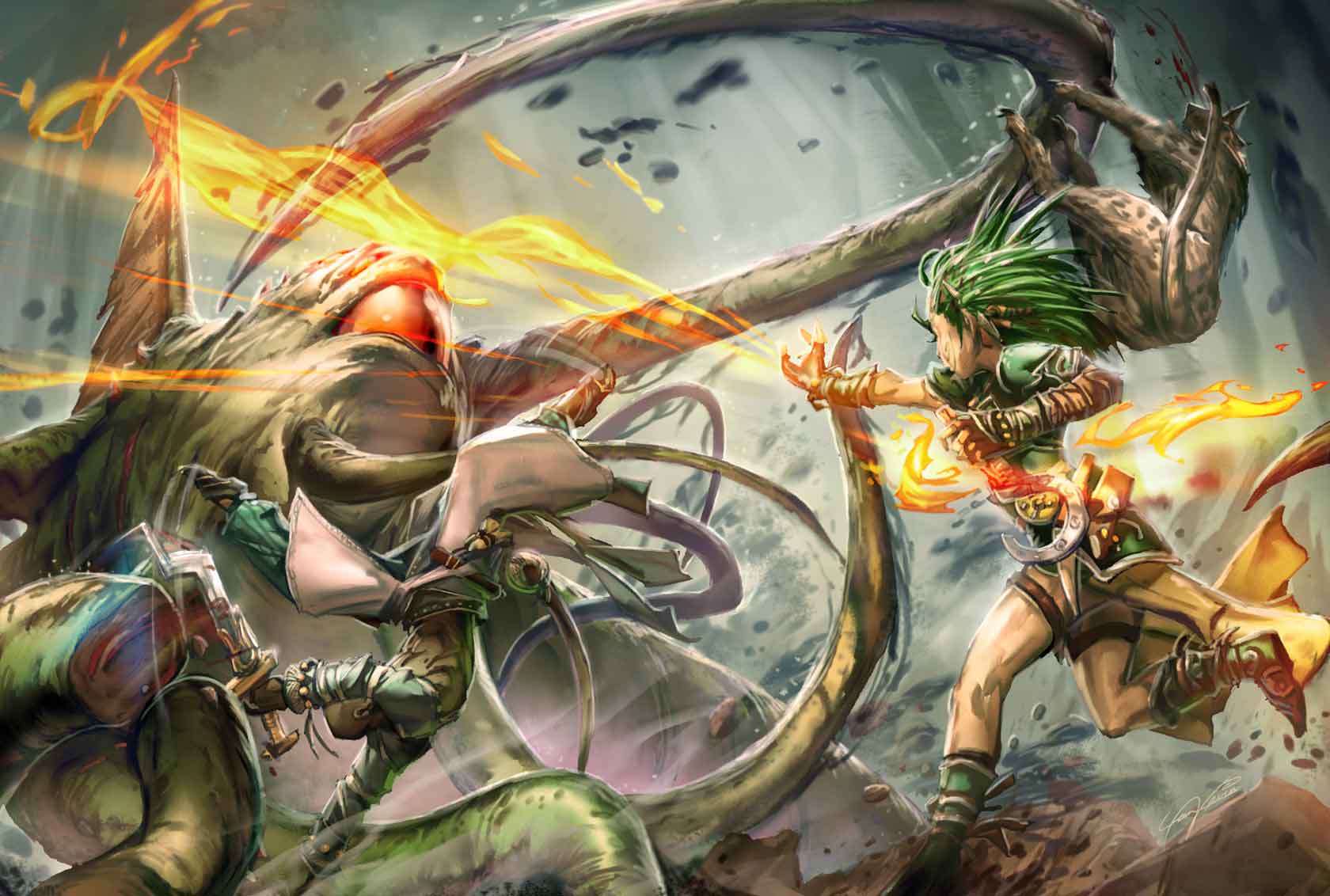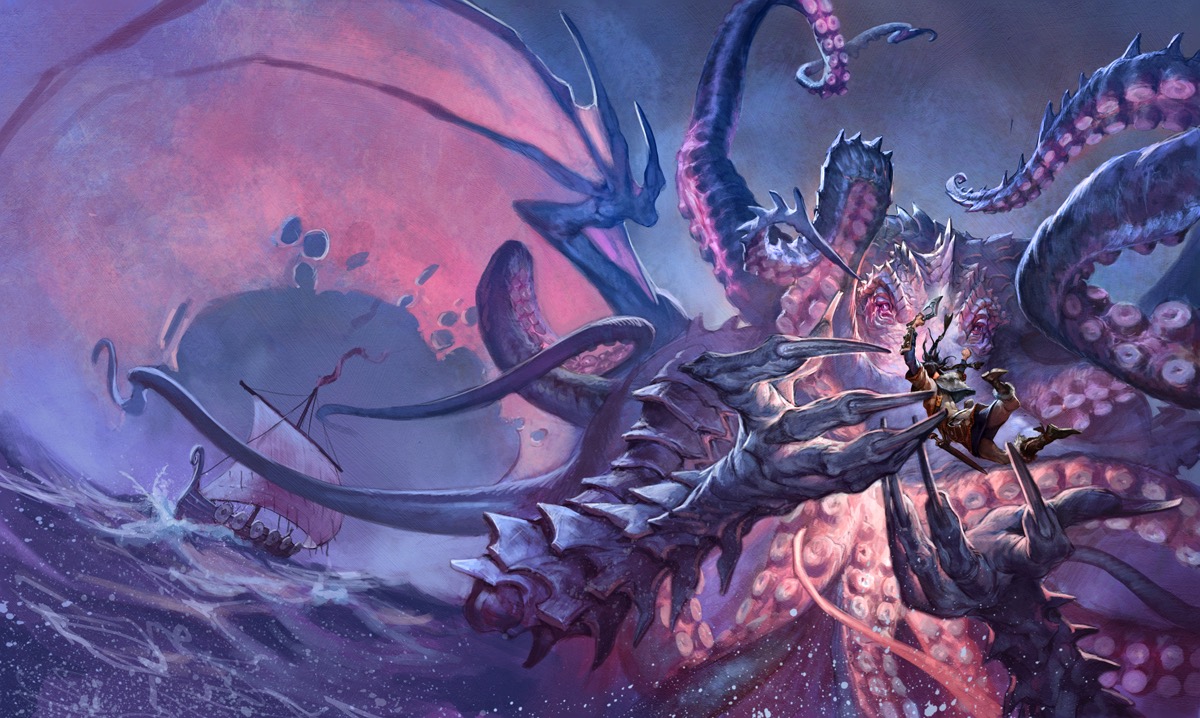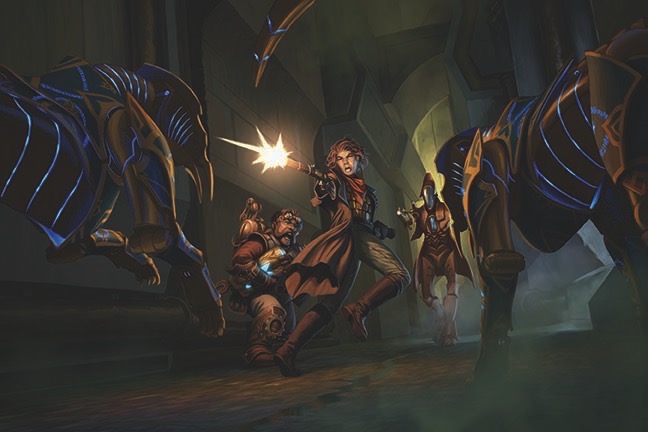Alright, I need you to imagine your most recent character. Really dredge up something vivid. I’m guessing you’re imagining how they look. How you made their build. Perhaps you’re looking at reference art, or a commission? Maybe you’ve got a tab open and you’re listening to a song that you’ve adopted as their theme. But are you thinking about what they’re thinking about? Can you get inside of their head as literally as possible and get a really clear view of their thought process?
Hello and welcome to Eldritch Excursion, the blog with the know-how of mechanics to open the way to my pulsing brain sack and the flavor to help you take a great big bite from it. Today’s cerebral cereal is all about mindscapes and dreams and how to use one to explore your NPCs and PCs from the inside out.
You may already be familiar with the mindscape rules from the first edition of Pathfinder, but there has yet to be a proper rule set for that in the second edition. There are also a few spells that can delve into dreams, but many are difficult to access at early levels and few of them go into detail as to what can happen in those dreams. And while I have no doubts that the upcoming Dark Archive will expand upon this premise, I’ve got some ideas that I’d like to share. But before I do, we have to have a way to get into someone’s mind.
Dream Visitation Ritual 2
(Uncommon) (Enchantment)
Cast 1 hour; Secondary Casters 1 for each visitor (see below)
Primary Check Occultism (Expert); Secondary Checks Deception or Diplomacy
Range 10 feet; Target 1 willing or unconscious creature
You create a pathway to the dreams of the target. Each secondary caster may select one creature (including themselves) to visit the dream. The target and all selected visitors fall unconscious for the duration of the ritual. If the target wakes up for any reason, the ritual ends and the visitors are returned to the waking world. Mindless creatures cannot participate in this ritual in any way.
Critical Success The visitors enter the target’s dream and witness what transpires. If the target’s level is no higher than twice the ritual’s level, the visitors are sent deep enough to interact directly with the dream. This includes activities such as investigating the target’s memories, invoking a nightmare, or fighting off a malevolent force possessing the target. All visitors gain a +2 circumstance bonus to all rolls that interact directly with the dream. You may also reenforce the dream, increasing its maximum Integrity by 8.
Success As critical success, except the visitors do not gain the +2 circumstance bonus.
Failure You fail to send the visitors into the dream.
Critical Failure As a success, but you accidentally twist the dream into a nightmare (see below) and trap the visitors inside. Neither the target nor the visitors can be awoken while the nightmare persists and all damage dealt to the visitor’s dream projections is also dealt to their physical bodies as nonlethal mental damage.
Heightened (+1) The dream gains an additional +4 maximum Integrity.
Mindscapes and You
A mindscape is, as one would imagine, a place formed from the thought-stuff of a creature. It is functionally similar to planes, though the details of the plane vary based on the nature of the host as well as the circumstances of entry. By default, mindscapes have the same traits as the host’s home plane unless otherwise stated. Extraordinary factors such as the host being zealously devoted to a deity or sharing their heritage with an outsider may alter the alignment and planar essence traits accordingly.
Entering a mindscape requires a projection of your consciousness by spell, ritual, or other supernatural ability. As such, creatures appear exactly an idealized self, even if that form may have aspects that are different from their physical body back on the material plane. They still appear as their ancestry, with the same ability scores and proficiencies. Spells slots and prepared spells are also carried over, and casting a spell in a mindscape also expends the spell. As memory is a major factor, they also have their gear already equipped, though items they have not identified have no function. Creatures such as familiars and animal companions are also perfectly recreated based on their master’s memories, and the summoner can bring their eidolon directly into the mindscape.
As mindscapes are limited only by the imagination, GMs can get equally creative with the maps. Using illogical arrangements, surreal architecture, or mismatched parts of map packs is greatly encouraged.
Dreams and Dreamers
Mindscapes can be used for many things. Psychic duels, private mental sanctuaries, or even trapping a creature within its own mind, but by far the most common use for mindscapes is dreaming. Dreams are manifestations of the mindscape that tend to follow some kind of pattern or emotional flow. Some dreams may reenact precious memories, others could be senseless abstractions, while a few are terrifying nightmares. Player characters might also have their dreams influenced by class abilities such as the Oracle’s Curse or the Witch’s Patron.
Each dream has a Key, which represents the host within their own dream. This is most often a projection of the host themselves, though creatures that frequently conceal their true form may do so in the dream as their subconscious detects an intrusion. Exceptionally unusual dreams may feature a prominent object as its Key.
Each dream has Integrity, representing its overall stability. A dream’s Integrity is equal to the host’s hit points, using the host’s Wisdom score in place of their Constitution score (for PCs) or using the higher range for clever enemies and lower range for physical brutes (for NPCs). Dealing damage to the Key also deals that much damage to the dream’s Integrity. Reducing the dream to 0 Integrity immediately causes it to end and the host is awoken by the sudden shock.
Combat in the Dream
Under normal circumstances, dream combat is a fairly harmless, as wounds in the dreamscape do not usually pass on to the physical body. As such, damage dealt to a creature projecting into someone else’s dream only counts in that dream. Likewise, conditions such as Wounded and Doomed do not carry over. Any creature who’s dream-self dies instantly wakes up and has fatigued condition.
Any creature that is actively possessing the host exists as a projection within the dreamscape. Such invaders typically hold the Key in some state of bondage or enthrallment. Defeating these malevolent projections will instantly end the possession effect, though canny invaders will attack the Key to prematurely end the dream if they’re in danger of losing the fight.
Nightmares
Some dreams manifest as terrifying nightmares. While these can occur naturally, it is also possible to invoke one by using any kind of spell or effect to inflict the frightened condition on the Key. A nightmare can also be invoked by casting nightmare on the Key or the host’s physical body.
A nightmare causes the dream to take on a sinister aura, typically changing the dreamscape based on the host’s own fears. The Key is immediately beset by a deadly hazard or monster with a level equal to the host’s level plus the frightened value that triggered the nightmare (frightened 1 if no value is given.) The Key is relatively helpless to defend itself, and will inevitably succumb to the nightmare without intervention; it begins fleeing, loses proficiency in all skills and weapons, and all forms of movement are reduced 5 feet. Rescuing the Key from the hazard or defeating the monster ends the nightmare, instantly restoring the dream to full Integrity. If the Key is killed during a nightmare, the dream instantly concludes and the host awakens with the fatigued condition.
But Wait, There’s More!
There’s a whole lot going on with this. Dream weaving, psychic combat, story hooks, and the kinds of creatures that are native to dreamscapes. But the article is getting pretty unwieldy and I gotta pump the breaks. Feel free to use what’s here and build off of it, but rest assured I’ll be expanding on the subject in a future article.
Until next time, sweet dreams!

